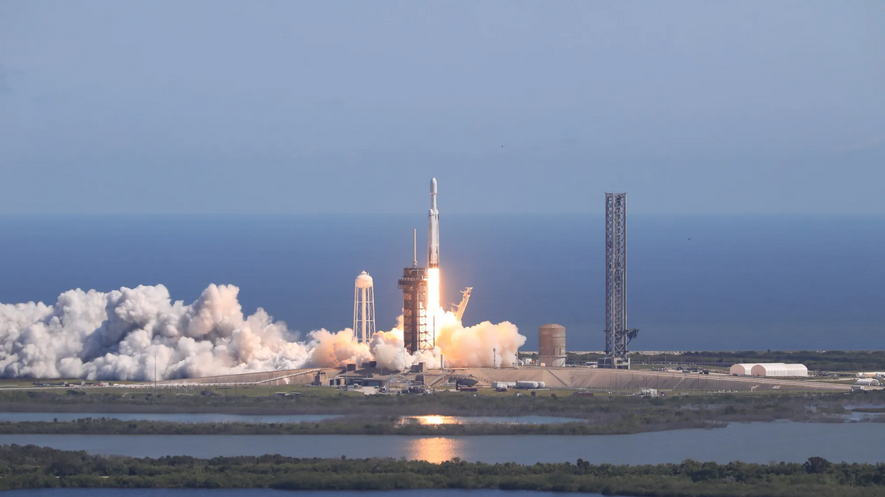
France successfully launched its second CSO-2 military observation satellite with a Soyuz rocket from the Guyanese Space Centre near Kourou in Guyana on December 29. With CSO, Belgium is moving towards bi-national cooperation because, on December 31, the Belgian cooperation agreement ends for the two-decade-old HELIOS observation programme.
CSO stands for Optical Space Component. Belgium signed a cooperation agreement with France in 2017 and is participating in this programme with an investment of around 100 million euros. Belgian Defence and science policy (BELSPO) each take half their responsibility. A large part of the amount, borne by BELSPO, is guaranteed in industrial return to the Belgian space sector.
The programme is part of a complementary approach to sensors and a pooling of resources for European space defence. The first satellite (CSO-1) was launched two years ago.
CSO, a constellation of three observation satellites nuit by Airbus Defence and Space with a participation of Sonaca, provides better support for military operations with higher image resolution both day and night. It also gives more flexibility to tune into a crisis area. The number of observation points targeted increases over a defined area in a single pass. CSO thus ensures more images with better quality that are available more quickly. The second CSO-2 observation satellite will render operations faster than CSO-1 with an even better spatial resolution given its lower height.
The independence of the assessment of a situation is guaranteed by the use of a very complete and varied range of sensors (space, air, sea and land). Observation satellites occupy an undoubtedly essential place: they provide worldwide coverage, allow overflights without legal constraints and make up for the lack of deployment on the ground. They are one of the most important sources of images.
The increased amount of information available with CSO (better spatial, spectral and temporal resolution) poses the challenge of further automating downstream image processing. For this, our operating chains are constantly evolving to integrate the best tools and algorithms. It is also a specific area of Research & Development in which Belgian Defence will invest more and more in the years to come, in collaboration with industry, BELSPO and the academic world.
These technological changes in the analytical field also pose a challenge in the field of human resources. In the short term, various civilian positions will be opened by the Belgian Defence.
Belgium closes the HELIOS chapter
Belgium is co-owner of the old HELIOS II system which has been operational since 2004. The system is a constellation managed in a rather exceptional way in international co-ownership. In general, this collaboration went very well.
With CSO as a successor, we are moving to bi-national cooperation because for Belgium, participation in HELIOS will end on December 31, 2020. The constellation will remain in effect for the moment because some states do not yet have access to CSO. Then it will be withdrawn from circulation.
The strategic imagery previously provided by HELIOS and now by CSO is essential for defence operations and for supporting Belgian foreign policy and derives from recommendations made by the Rwanda Commission at the time. Since then, the operational use of satellite imagery has increased tenfold and will continue to do so in the future.
Relive the launch:
December 29, 2020
Source: BelDefNews, Johan Lievens



